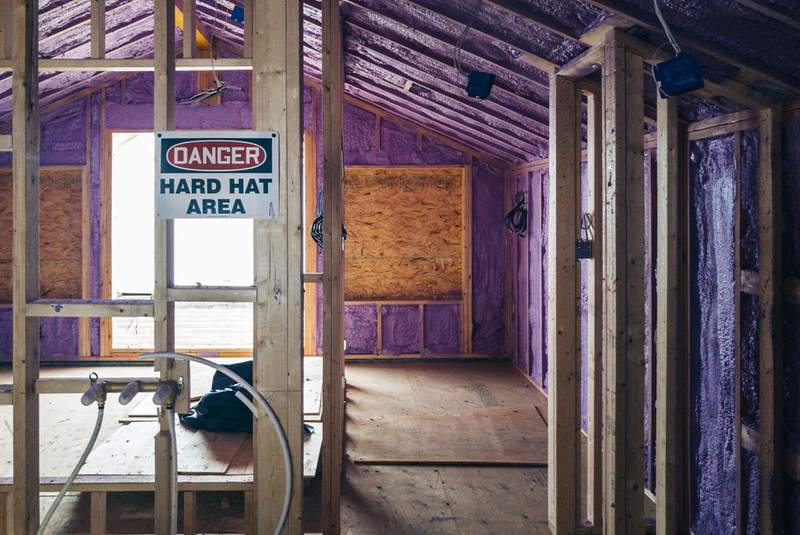Chances are that your home is full to the brim with cherished memories of family and friends. But, as you get older, you may start wondering what exactly will happen to your home when you pass away. Fortunately, a life estate can take away the uncertainty by legally assigning an heir to receive your property without interference from court proceedings.
What Is A Life Estate?
A life estate is a form of property ownership that splits control and ownership of a property. The person who creates the life estate for their home and assets is known as the life tenant. Though the tenant retains control of the property, they share ownership during their lifetime with the remainderman, a legal term referring to the estate’s heir.
While the life tenant lives, they are in control of the property in all respects, except they cannot sell or encumber the property without the consent of the remainderman. After the life tenant passes away, the remainderman will inherit the property while avoiding probate. Life estates can simplify the estate planning process so that a homeowner can easily pass property down to the next generation upon death.
See What You Qualify For
Buy A Home
Discover mortgage options that fit your unique financial needs.

Refinance
Refinance your mortgage to have more money for what matters.
Tap Into Equity
Use your home’s equity and unlock cash to achieve your goals.
Why Create A Life Estate?
Life estates are popular estate planning tools that automatically transfer ownership at the life tenant’s death to their heirs. Historically, property was transferred from father to son, so life estates ensured that the father’s wife – who could not own property in her own name – was protected during her lifetime.
Generally, life estates are now obsolete for ensuring that women keep their property. However, life estates have two crucial uses today: avoiding probate, which can be a time-consuming hassle, and protecting property from required sale to meet Medicaid requirements should the life tenant need nursing home care.
What Is A Life Estate Deed?
A life estate deed is a legal contract that a real estate attorney draws up to create joint ownership of a property. As the owner and life tenant of the property, you retain control and (if desired) tenancy through the end of your life. In the event of your death, the property would automatically transfer to the individual or entity of your choosing.
The life estate deed reflects the terms of the life estate. Upon the death of the life tenant, the heir needs only provide the death certificate to the property clerk in the property’s municipality to take complete ownership of the property. In other words, the life estate deed certifies the conditions of the contract and allows the remainderman to receive the estate in a streamlined manner.
How Does A Life Estate Work?
Here’s an example to make the concepts of a life estate more concrete. Let’s say an elderly widower wants to leave his house to his daughter after he passes away. He creates a life estate to instate joint ownership with his daughter and ensure that his daughter receives the property with little difficulty.
The life estate designates the widower as the life tenant and his daughter as remainderman. The widower decides to live in his home until his death, meaning he will pay for the home’s property taxes and insurance while alive. However, he now shares control of the house with his daughter.
As a result, though he’s responsible for the upkeep of the property and can make minor improvements, he needs his daughter’s permission for significant actions like selling or refinancing the home. Furthermore, the only way to nullify the life estate is if both father and daughter agree to cancel it.
When the widower dies, his daughter will receive the property without going through probate. However, if the estate’s value is above a particular amount, the remainderman will owe the IRS a portion of the estate.
The life estate is a significant factor should the widower become sick or need nursing home care. Typically, the life estate specifies how the life tenant’s incapacitation affects their assets and the remainderman. Since Medicaid often helps pay for the healthcare for many older adults, how a life estate affects this form of government assistance is crucial.
How Does A Life Estate Work With Medicaid And Nursing Home Expenses?
Medicaid can play an essential role in many older adults’ lives, providing them with the financial support needed for nursing facilities, home health care and more. However, the government will consider your assets when calculating Medicaid eligibility, which means that owning a home – or selling it and keeping the proceeds – could impact those benefits.
When determining your eligibility for Medicaid, most states will use a 5-year look-back period, which means they will total up all the assets you’ve held, sold and transferred over the last five years. If the value of these assets passes above a certain threshold, you will likely be ineligible for Medicaid assistance.
Fortunately, a life estate can help elderly property owners avoid selling their home to pay for nursing home expenses. If your life estate deed was established more than five years before you first apply for benefits, the homeownership transfer would not count against you for Medicaid eligibility purposes. To ensure you’re correctly navigating qualifying for Medicaid, it’s a good idea to discuss your situation with an attorney specializing in Medicaid issues.
Ready to refinance?
See recommended refinance options and customize them to fit your budget.
What Are The Benefits Of Creating A Life Estate?
By understanding the features of a life estate and creating one at the right time, you can reap the following benefits:
Property Avoids Probate
Property held in a life estate does not have to go through probate. Instead, it simply transfers ownership to the remainderman, saving everyone time and headaches. It also eliminates the complications that arise when trying to spell out your intentions for your property in a will.
Property No Longer Part Of The Estate
Once your state’s Medicaid look-back period has passed, a property transferred through a life estate will not count against your eligibility.
Keeps Elders In Their Homes
Even though a life estate effectively transfers property ownership to the remainderman, the life tenant has guaranteed residency, if desired, for the rest of their life.
What Are The Potential Downsides of Creating A Life Estate?
Though life estates are helpful tools, they do have several drawbacks:
Property Is Vulnerable To Debts Of Heirs
Since the life estate transfers property rights to a designated heir, the heir’s creditors may have the right to seize inherited assets to cover lingering debts if there are any. This unfortunate circumstance would contradict the life tenant’s wishes to pass their assets on directly to the heir.
Heirs’ Rights To The Property Vest At Creation
Once you create a life estate, property rights vest in your heir. You can’t take back those rights without the heir’s consent. This makes a life estate harder to break or change than simply naming a beneficiary. For this reason, some older adults prefer to create a living trust, which its creator can always change.
Property Can’t Be Sold Or Mortgaged
If you want to significantly alter your property, convert it into a rental, or even decide to sell, you’ll need your remainderman’s permission and even with their permission, the remainderman may be entitled to a share of the proceeds. This restriction introduces challenges if you fall on hard times financially and are looking for relief.
For example, if a life tenant is having trouble affording property taxes, maintenance, mortgage liens and insurance on a fixed income, the life estate could prevent them from taking a reverse mortgage. Remember, to end the life estate, both the life tenant and the remainderman need to agree to end it.
Life Estate FAQs
Have more questions about a life estate? Your first source of information should be an attorney, estate planner or trusted legal advisor. However, here are the answers to some frequently asked questions.
What happens if a remainderman dies before the life tenant?
If the remainderman dies before the life tenant, the rights do not revert back to the life tenant. Instead, the remainderman’s ownership rights pass to their heirs.
Can I donate my home to a charity with a life estate?
Yes. Homeowners can use a life estate to donate their home to a select charity before they die. There are also tax benefits to this, but any arrangement should be made in consultation with an attorney and a planned giving advisor from the organization you plan to donate to.
Are life estates subject to inheritance taxes?
Yes. While a life estate may help with the inheritance process, they may be subject to state and federal inheritance taxes, depending on the location and size of the estate.
The Bottom Line: Life Estates Are An Important Estate Planning Tool
Life estates help elderly homeowners set up a straightforward, legal directive for an heir to inherit property without getting stuck in probate. In addition, life estates allow the owner to control the property in all respects, except that they cannot sell or mortgage the property without the consent of their heirs. If created in a timely manner, a life estate can even help its creator qualify for Medicaid assistance.
However, as the life tenant, you’ll lose the ability to sell or mortgage your home without your heir’s permission. Since you cannot reverse a life estate without the consent of both the life tenant and remainderman, it’s recommended to understand each facet of the contract before committing to it.
If you want to learn more about estate planning, find out what happens to your property if you die without a written will.

Ashley Kilroy
Ashley Kilroy is an experienced financial writer who writes for solo entrepreneurs as well as for Fortune 500 companies. She is a finance graduate of the University of Cincinnati. When Ashley isn’t helping people understand their finances, you may find her cage-diving with great whites or on safari in South Africa.












